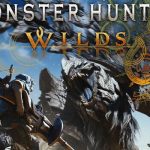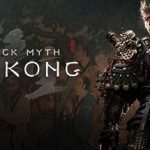This is a series that has been overshadowed in recent times by a good-but-not-as-good spin-off that has way too much watching cutscenes and nowhere near enough actual “playing the game”. I will review this without comparing it to that other series, because it’s not needed. This is the main series. The existence of an inferior spin-off isn’t particularly important in this case.
SMT is one of those series that is consistently great, and I was hyped as hell when this was announced for Switch… in 2017. Yeah it took a while from announcement to release. Not quite the fifth installment in the series (since Strange Journey is also a mainline SMT game, and SMT4: Apocalypse is a sequel to 4 of course, and also there’s if… and NINE), it’s a series that has always had more of a focus on gameplay and team construction than the story, which is always a little bit barebones on the surface.
Let’s see if the wait for this game was worth it!
Developer and Publisher: Atlus
Release date: November 12th 2021
Platforms: Switch
Genre: Console-style RPG
Story
I’ll start with story just to… get that out of the way. This takes place in Tokyo, as you may expect. Your main character, a very attractive young male high schooler who can’t talk for some reason, is going back home from school with a group of “friends” (not actually friends, just that the school requires that students go back home together because the streets have been dangerous recently). There was some seemingly very bloody violent murder by some “creature” in the subway station, so you take an alternate route. While in said alternate route, you’re transported to a wasteland that seems to be Tokyo, but there’s angels and demons all over the place. You’re saved by the Proto-fiend Aogami as he fuses with you, turning you into a special type of demon called a Nahobino (a fusion between human and demon). At that point, at first, you’re travelling through these ruins of Tokyo, fighting and negotiating with demons, trying to help your fellow students that were transported alongside you to try to get back to your version of Tokyo (with the current one seeming to be Tokyo 20 years into the future, after a massive war between angels and demons). As things go on, you find out a bit more about the demons, angels (which are just divine-type demons but let’s ignore that for the plot) and humans, specifically the state of the “real” Tokyo and the Tokyo Netherworld. You help Bethel, an organization meant to fight the demons and wait for the return of the Creator (who was supposedly killed) under the orders of Archangel Abdiel, though learning about the different sides of the fight may sway your opinion of each. There’s barely characters, the Nahobino is basically a mute that has no personality, the one of your “friends” I thought was cool design-wise does literally nothing, and the only character that has development is Dazai (and he develops into someone I don’t like lol).
One thing about SMT is that there’s frequently some choices you make about which side of the conflict you’ll support. And you may think you’re doing that as you’re playing the game. Some side-quests make you choose between helping demons or helping angels, for example. Some parts have dialogue options too where you give your opinion about the state of the world. So you may think these are important. They’re not. Right before the very last segment of the game, you’re basically asked which ending you want to get. It’s pretty unfortunate, as I figured I was kinda naturally being pulled into one direction or another as I was making these choices, but no, you just… choose which ending you want right before the end (and there’s a secret ending cutscene if you do certain things in your playthrough, not sure what those things are). A bit unfortunate, but I guess it’s fine. There’s just one ending I can’t see anyone actually choosing. Either way, this is a video game, so let’s talk about things that actually matter in a video game… Or not, because first…
Graphics
Graphically, this game is beautiful. Technically it has issues of course, it IS on Switch, which is the console equivalent of a potato with electrodes poked into it, and, as such, framerate isn’t solid, and technically the graphics don’t quite have the model and texture quality you’d get from a platform with actual internal components. Some spots in the game the framerate goes below 15fps, though it’s not too often. I’m actually surprised how… okay the Switch is able to run this game, with fps usually being around 25-30 most of the time. That said, when it comes to visual design, this game is really nice. The cool ruined landscapes of Tokyo look great, the demons of the SMT series have never looked so good (I always love how the demons are fairly correct depictions of demons and gods from different mythologies), and there’s some cool details in there. This game actually has a lot of direct references to SMT3, may it be looking at the sky to see some familiar things, to story bits like the Black Frost sidequest, or even some of the areas being very similar to how they’re shown in SMT3 (like Asakusa being this big bowl-shaped desert area). So to keep this short, game looks great, Switch struggles a bit in some areas but generally runs it better than you’d expect considering the quality. Oh and there’s some cool attack animations too, especially with some of the unique attacks (and especially the Nahobino’s unique attacks), and the models for demon fusions look fucking incredible.
Gameplay
So now to talk about the important stuff, it’s time for gameplay! This is a console-style RPG with heavy team customization.
You walk around the world in third-person (which leads to my first complaint, that being that the camera in those portions are a bit too close to you so it’s a bit hard to see around yourself). There’s no random battles in this game, instead enemies walk around the world and you can touch them to start battle. You can hit them with a sword for basically a magatushi boost (if you hit them from behind), but the sword doesn’t really do anything otherwise. If an enemy has seen you before you hit them, that means that, no matter what, you have a chance of not having priority in battle anyways (which I believe is also based on stats). The world has chests (in the form of yellow shapes you destroy with your sword), Mimans (small red demons for you to find, usually hidden in hard to reach or see spots, you get rewards for each 5 I think, with 200 total hidden), bits of magatsuhi in the form of small red, yellow and green lights that can heal you a bit, blue save spots (more on those later), ruined vending machines which give you items you can sell and, yes, enemies all over the place. You can jump, which may allow you to find alternate paths to different areas, or find secret things. And each area has a few Abscesses, which are these big red… things… once you get close to them they summon demons to attack you, and you have to either clear those out or avoid them until you get to the Abscess itself and fight the more powerful demons that are directly protecting it. This gives you access to miracles, and also clears out a large part of the minimap since the abscess itself prevent you from seeing the minimap well. Basically the exploration is pretty simple but fun. Trying to path your way towards finding all the secrets and chests and stuff is fun, and this is a case where I’m fine with fights being avoidable since getting random fights would get in the way of trying to do platforming.
The only other thing to really talk about as far as exploration is sidequests. Some demons will ask you to do things for them. Doing those things will give you items, demons, essences and EXP. Lots of EXP, it’s quite nice. These sidequests may be killing specific demons, killing specific demons or killing specific demons. Also there’s a few to give them items (which are semi-repeatable if you want to waste good items), or find stuff semi-hidden in the world (and by semi-hidden I mean the minimap tells you where everything is, except a few sidequests that you have to figure out yourself for some reason). I think doing all sidequests is a requirement for the true ending but I might be wrong. I did them all anyways. Some sidequests are basically a choice. A demon may ask you to go kill an angel, then the angel will say “wait no, go kill the demons instead” and you have to decide which of the two sidequests you’ll do.
But the core of SMT is combat. As is tradition now, this game uses the Press Turn system, which has been around since SMT3 and used in many other SMT games (including some spin-offs). Essentially, this is turn-based, where you get the player turn where all your characters will act, then the enemy turn where all the enemies will act. You get 1 action icon per character (up to 4 in your active party, if a demon dies on the enemy turn that means you’ll only get 3 action points, for example), which allows you to use 1 move. You can use a skill (including the main attack), talk (for negotiations), use items, change your party (Nahobino can change any of his demons, while a demon changing will only switch itself out) or guard. Attacks hitting can have many effects. The main effect will be damage with nothing special. Hitting something the enemy resists just does less damage. Hitting something they nullify blocks all damage and costs you an extra action point in addition to the one your attack used, and the same thing happens if your attack misses. If the attack is absorbed or reflected (I might be wrong about absorbed), that ends your turn entirely. If the attack hits an enemy weakness OR crits, your current action point will not be used and will start glowing (if it’s already glowing, the next one will start glowing instead). That means that, once all your characters have acted, you’ll get more actions starting from Nahobino down for each glowing icon, at which point the point itself will get used and disappear. And if you use an attack that doesn’t make an icon glow, it will use up a glowing icon before all the others. So you can’t get infinite actions, you will get at most 8 per turn, so 2 actions per character. Very useful. Winning battles gives you EXP to level up as per normal RPG stuff, and when the Nahobino levels up, in addition to your level up stat bonus, you get an extra point to give to whichever stat you prefer. Sometimes demons can learn new skills randomly, or give you items/essences when they level up. Fun.
A big focus on combat, in addition to exploiting weaknesses to get more actions, is buffs and debuffs. There’s 3 buffs: Attack, defense and accuracy+evasion. This was a must in SMT3, as focusing on Sukunda to reduce enemy accuracy and evasion, making them miss a lot. You could stack those up to 4 times in SMT3, and then get even more from buffs so enemies would hit you very little. Here, you only get to stack those twice, and I feel their effect isn’t quite as strong as in Nocturne. So in a way it’s a bit more important to focus a bit more on ALL buffs and debuffs, since you’re more likely to get hit so buffing defense and debuffing enemy attack is very useful too alongside increasing your chances to avoid attacks (and since missing removes action points, it’s quite useful to get the enemy to miss as much as possible). Some of the buffs are very strong as they’ll buff or debuff more than one stat, or all 3 at once… though Luster Candy and Debilitate cost a LOT of MP so they’re a bit tough to use. You CAN reduce MP cost by increasing your support-type mastery (similarly to other types of moves), so Luster Candy +9 will only cost 89 MP compared to over 120 at +0.
And also there’s Magatsuhi skills, which you can use when your Magatsuhi meter is full. You fill a bit of Magatsuhi every turn in battle, or from red thingies as you’re exploring (with extra things you can get from Miracles). You get Talismans, which enable demons of different races to use these special skills. There’s also a basic Magatsuhi skill everyone can use, which is the best one, Critical. This makes all your attacks crit for one turn. Ridiculously strong. There’s other, more situational ones too, such as healing and buffs or improvements for certain types of moves. Pretty fun.
Negotiating with demons and fusing them is a huge core of the gameplay here. You can talk to demons in battle to get them to join you, though each demon type has different personalities and will ask question as you try to convince them to join you. Once they want to join you, they’ll ask you to give them shit until they agree, and there’s a chance they’ll fuck off anyways. I will note you can talk to all demons here, in Nocturne there’s some that can’t talk. A demon joining you can be added to your 4-person active party, or will be put in your reserves for you to switch in when you want. You get more reserve spaces as you progress. Fusion is done in the World of Shadows, which you access, much like the store, through any of the save points. Demons can’t specifically fuse with all other demons, but most of them will work. You can fuse with demons you have, or pay money to use demons from your compendium (basically a demonic pokedex that you can use to summon copies of demons you previously had on your team (stats, level, skills and all)) and use those for fusions. Fusions must be your level or less to be doable (otherwise you’d break the game). The “child” demon has a few skills they’ll start with, can learn any of the skills the parents have (unless the skill is unique, in which case it can’t be inherited). As they level up they’ll learn a couple more. A problem in early game is that you have fewer skill slots so it’s harder to build a good demon since they’ll have such limited movesets, but by the end you have a bunch. There’s also special fusions, which tend to be bosses or other special demons, those take 3 specific demons for the fusion. Some of them are pretty strong, but I find by the end that normal fusions are a bit better.
Other team-building options include Miracles, which you get from the World of Shadows as well. You unlock new ones as you destroy Abscesses, and they cost Glory. You get Glory from finding Mimans or Glory deposits. The main things you should focus on are some that help with demon fusion (you can get OP as fuck demons with the one that transfers some stats over during fusions, for example), but mainly be sure to have Glory for skill slots on Nahobino and Demons, it’s extremely useful, as well as more reserve spots for demons. Another option in the World of Shadows is Essence Fusion. Sometimes from chests, sometimes from demons leveling up, sometimes from side-quests, you’ll get the essence of a demon. You can use Essence Fusion to teach moves from that demon to the target demon, so it’s possible to get really good essences early on with ridiculous skills. Nahobino can also essence fuse to get the affinities of the demons, specifically the elemental weaknesses and resistances, so you can change your resistances as needed for different situations. Pretty cool.
Difficulty is an interesting discussion here. Mainline MegaTen is always tough, and this is no exception. I do think in the end that it’s easier than the others because of all these crazy team-building features, but it will still kick your ass here and there. Namely, if Nahobino dies, it’s game over, regardless of revival items and skills. A bit dumb, I hate when RPGs do this. Invest in that Vitality stat. One thing I’ll say is that, whenever you’re in a new area, until you level up a lot, enemies WILL be able to wipe you out in a single turn pretty easily. And if you die you lose all your progress up until when you last saved (since it boots you back to the title screen)… so save, a lot. There’s a reason there’s save points all over the place. And because of the press turn system, even though it gives you a great advantage (especially when you figure out all the weaknesses), also gives the enemies an advantage since they can get press turns from hitting weaknesses themselves or, more frequently, getting crits. I find that enemies get crits quite a lot, and they also have Magatsuhi: Critical and they use it every battle. Then bosses and Abscesses will frequently wreck you even more. Basically every first encounter with a boss or an abscess will be a “test run”, where you’ll die for almost sure (except one boss that is ridiculously easy) but find out weaknesses and start figuring out how you’ll handle the actual battle, or if you just need to get stronger (hello level 96 superboss). It’s overall super balanced. It won’t hand you victory for free, but it’s super fair. If you lose, you fucked up either with your combat strategy, team-building or you’re just too weak. It’s great. This game will destroy you, while giving you all the tools to not be destroyed. Perfect.
Overall
SMTV is one of the better games this year. It’s just super good. The combat is fun, the exploration is fun, there’s a bunch of sidequests and optional bosses and shit, there’s a lot of team-building options… It’s some good stuff. Nothing about these elements is bad, it all works extremely well. And the difficulty is fine too, it’s easier than other SMT games but can and will still kick your ass all the time.
If you care about story, this is serviceable but not particularly noteworthy. I felt throughout the game that my choices were probably leading to different events in the endings, and they did not. The only choice that matters is right before the final set of bosses, which is a bit unfortunate if you care about that stuff. But the fun thing is that games aren’t about story. They’re about gameplay. So whatever man 😀
I basically have nothing to complain about with this game, it’s super well made and fun.
Definitely get this game, it’s very solid and another must-have on Switch (until it gets ported to PC eventually, which I hope it does).
…
…
…
…
(I do like Persona, but the endless comparisons to it from other reviewers is ridiculous and stupid, showing they have no fucking clue what they’re talking about and displaying their incompetence… also this is WAY better than Persona on a gameplay level… which is all that matters in a game)








Leave a reply